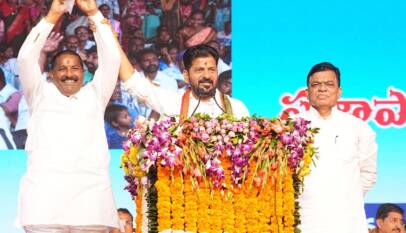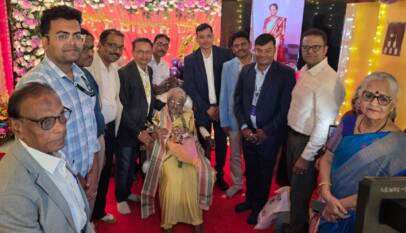95% of Land Records in Rural India Digitized
Rural India is undergoing a significant transformation with the digitization of land records, modernizing the management of land ownership. This initiative enhances transparency and efficiency in land administration, empowering millions of rural households. Union Minister of Rural Development Shri Shivraj Singh Chouhan recently emphasized the importance of this shift, addressing long-standing challenges related to complex paperwork and ownership disputes. He noted that nearly 95% of land records have been digitized in rural India since 2016, marking a critical advancement towards ensuring secure and accessible land ownership in rural areas.[1]

Need for Digitization of Land Records[2]
The digitization of land records in India has transformed land management by addressing traditional challenges like disputes, fraud, and inefficient manual processes. Now, ownership information is easily accessible online, enhancing transparency and reducing illegal encroachments. Digitized records simplify dispute resolution, easing court burdens, and empower marginalized communities by improving access to land rights. Integration with geospatial mapping enhances land management, enabling accurate surveys and planning. During land acquisitions or disasters, digital records ensure fair and timely compensation. Overall, this shift has paved the way for a more transparent, accessible, and efficient land governance system in India.
Digital India Land Records Modernization Programme (DILRMP)
The Digital India Land Records Modernization Programme (DILRMP), previously known as the National Land Record Modernization Programme, was restructured as a Central Sector Scheme in April 2016, with full funding from the central government. Its main goal is to establish a modern and transparent land records management system by developing an Integrated Land Information Management System. This system aims to provide real-time land information, optimize land use, benefit landowners and potential buyers, support policy-making, reduce land disputes, prevent fraudulent transactions, eliminate physical visits to offices, and enable data sharing with various organizations.
Achievements:
Significant progress has been made under DILRMP. Around 95% of land records have been computerized, covering over 6.26 lakh villages. Digitization of cadastral maps has reached 68.02% at national level. Additionally, 87% of Sub-Registrar Offices (SROs) have been integrated with land records. The government extended DILRMP until 2025-26, adding new features like Aadhaar-based integration with land records and computerization of revenue courts.
Key Initiatives under DILRMP
- Unique Land Parcel Identification Number (ULPIN):
The ULPIN or “Bhu-Aadhar” provides a 14-digit alphanumeric code for each land parcel, based on its geo-coordinates. Implemented in 29 States/UTs, it helps streamline real estate transactions, resolve property disputes, and improve disaster management efforts.
- National Generic Document Registration System (NGDRS):
NGDRS or e-Registration provides a uniform process for deed/document registration across the country, allowing online entry, payments, appointments, and document searches. So far, 18 States/UTs have adopted it, and 12 others share data with the national portal.
- e-Court Integration:
Linking land records with e-Courts aims to provide authentic land information to the judiciary, aiding in faster case resolution and reducing land disputes. Integration has been cleared in 26 States/UTs.
- Transliteration of Land Records:
To overcome language barriers in accessing land records, the program is transliterating land documents into any of the 22 languages listed in Schedule VIII of the Indian Constitution. This is already in use in 17 States/UTs.
- Bhoomi Samman:
Under this initiative, 168 districts across 16 States have achieved “Platinum Grading” for completing over 99% of the program’s core components, including land record computerization and map digitization.
Bottom of Form
Conclusion
The Government of India is spearheading a transformative shift in land governance, focusing on enhancing transparency and accessibility of land information. By leveraging modern technologies like geospatial mapping and unique land parcel identification, this initiative seeks to establish a more organized and efficient approach to managing land records. This change is especially important for marginalized communities, as it empowers them with secure and accessible proof of ownership—an essential factor for economic growth and stability. As land records become clearer and more accessible, they pave the way for a more inclusive and equitable society, where every individual can claim their rightful place and contribute to the nation’s progress.
PM Modi Presents Russian President Putin with Curated Gifts Reflecting India’s Culture and Heritage
New Delhi, Dec 2025: During the two-day visit of Russian President Vladimir Putin to India…




















